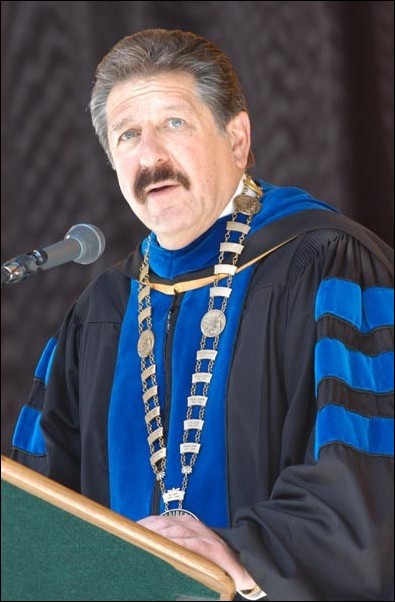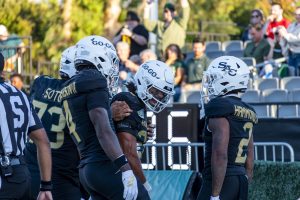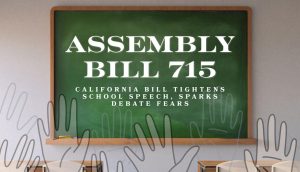Inauguration donation marred by student protest
Image: Inauguration donation marred by student protest:President Alexander Gonzalez speaks at his inauguration Monday. Jeff Angove/State Hornet:
October 5, 2004
President Alexander Gonzalez announced Alex G. Spanos will donate $10 million for Sacramento State’s Recreation, Wellness and Events Center, during his inaugural speech Monday.
The inauguration of Gonzalez started at noon and ran until 3 p.m., where faculty, students, alumni and people from the community gathered in front of the university’s outdoor theater to either participate or watch the ceremony.
The $10 million donation will go towards the $23 million that Gonzalez must raise before students are asked to pay $110 per semester for the project, which will begin in 2007.
Students from KSSU, Sac State’s student-run radio station silently protested, Monday, during Gonzalez’ inauguration.
The 20 students filled four rows and held up signs that said, “stop the static” and “support college radio — let student voices be heard” and wore radio headphones around their necks as props.
“We are only a three-watt radio station,” said Aaron Hilliard, sophomore and electrical engineering major at Sac State. “No one can hear us.”
Hilliard said he and his peers want the university to give KSSU more wattage.
“Most stations have 50,000 watts and we have only three, so you can barely hear us on campus,” said Laura Henningsen, a communication studies graduate student with a bachelor of arts in communication studies. “You’re lucky if you can hear it in your car in the parking lot.”
Henningsen said KSSU has been on Sac State’s campus for 15 years and wants to be recognized.
“We still don’t have a license,” Henningsen said.Henningsen said that representatives form KSSU, along with the station’s manager, Rafael Chavez, have talked with Associated Students and Gonzalez about receiving more wattage.
“There has been no change so far,” Henningsen said.Chavez did not participate in the silent protest and was unavailable for comment.
Sac State students were able to attend the ceremony as the Faculty Senate and Academic Affairs said classes could be dismissed at the discretion of the instructor without penalizing students wishing to attend the inauguration ceremony, according to a letter sent to faculty Sept. 28.
Clara Potes-Fellow, spokeswoman for the chancellor’s office, said that allowing students to miss class for a presidential inauguration is a decision the president of each campus makes.
“He thought about having it during spring commencement, but thought homecoming week was the best time,” said Ann Reed, associate vice president for public affairs.
Reed said that there is no rule that dictates when the presidential inauguration should take place.
The Faculty Senate and Academic Affairs asked faculty to participate in the academic procession, dressed in traditional regalia.Mike Baad, professor of biological sciences, said he wasn’t planning to march at the ceremony.
“I don’t have regalia and renting it costs $75,” Baad said.
Tom Savage, professor of chemistry, said he couldn’t march because he had plans at home.
The academic procession included the university flag, the university mace, both current and retired faculty, community leaders and elected officials, delegates and representatives from universities, colleges, and other institutions, presidents and representatives from the 22 other CSUs, and the vice president for academic affairs, Ric Brown.
Gonzalez’s inauguration cost the university $30,000.
Reed said no state or federal funds were used to put on the ceremony.
“The money comes from the foundation that is funded through contracts, like Pepsi, and vendor revenues, (such as) eateries and individual sales on campus,” Reed said.
Reed said the foundation fund is used for commercial purposes and the money does not come from students and is only spent on the university.
Gonzalez’ inauguration as the university’s 11th president came over a year later after his presidential appointment on July 7, 2003.
Potes-Fellow said the president of each CSU decides when to have an inaugural ceremony.
California State University, Humboldt appointed their sixth president, Dr. Rollin C. Richmond on July 1, 2002. Richmond’s inauguration took place almost a year later on May 2, 2003.
California State University, Dominguez Hills appointed James E. Lyon Sr. as its seventh president on July 1, 1999. Lyon held his inauguration close to two years later on March 22, 2001.
The ceremony finished with a recessional from Sac State’s Fine Arts Ensemble.

























































































































